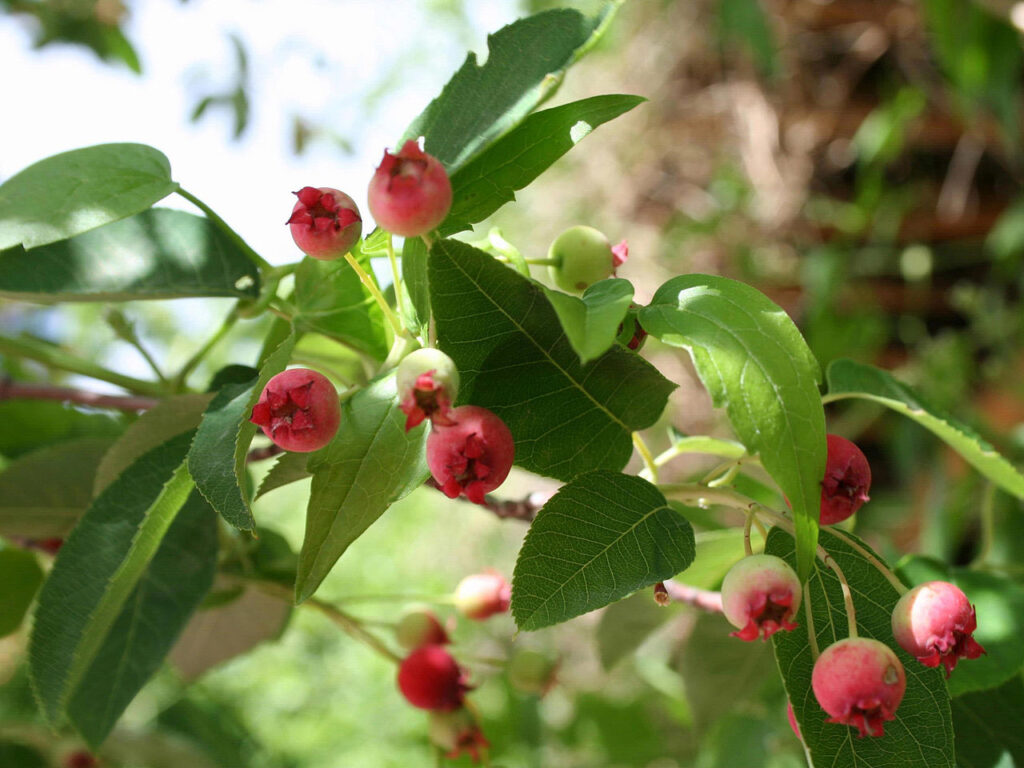If Arbor Day and Earth Day are not enough to get your nature fix, April is considered Earth Month. As we recently entered spring, a season of growth and renewal, it’s the perfect time to think about trees.
Forests provide shelter and food to hundreds of wildlife species, from the humble millipede to charismatic fauna like deer. Their roots hold soil in place. Their bark is the foundation of medicines. Their leaves make them a highly effective carbon sink. They are places of both peaceful solitude and outdoor recreation. But, enjoyment of trees and the benefits they provide does not need to be limited to acres of woodland. Your very own yard can be home to a tree too. Here are four native small trees and shrubs to consider inviting into your yard (and heart).
Redbud
An Eastern Redbud (Cercis canadensis) is a small tree with beautiful pink to red flowers blooming profusely in April. Growing to about 20 feet tall, this showy, low maintenance tree is a great source of nectar for spring pollinators like butterflies. The flowers are edible and can be used in wildflower salads. The buds can even be pickled!
Spicebush
The Spicebush (Lindera benzoin) is another great source of food for butterflies. Specifically, the Spicebush Swallowtail butterfly needs this shrub in reproduction, using the tree’s foliage to host its caterpillars. Autumn is the Spicebush’s time to shine with brilliant yellow to red colors. The leaves can be brewed to make tea with a pleasant citrus smell. And, in a pinch, the berries of this shrub can be ground up to use as an allspice substitute.
Serviceberry
A Serviceberry (Amelanchier laevis) tree is well known for its fragrant showy white flower clusters in the spring. Its loveliness continues in the fall with striking amber hues. The branches are densely spaced, making it fantastic habitat for birds. Along with shelter, the juicy red berries offer food. The fruit is edible for people too, making a refreshing snack eaten raw or used in a jam or jelly.
Smooth Hydrangea
Smooth Hydrangea (Hydrangea arborescens) is a small mound-shaped shrub, often growing to just 5 feet. Its flowers are uniquely shaped, resembling a soft, flat puff. Swallowtail and brush-footed butterflies are especially attracted to this shrub. In autumn, the leaves turn into an enchanting reddish-purple hue.
Information on how to plant specific trees and shrubs can be found readily on the internet or books common to libraries. But there are a few tips that can be applied to all. When planting, the hole should be twice as wide and deep as the container the plant is in. Use a power augers to dig the hole. After taking the shrub out of its container and placing it in the hole, fill the space using the same soil that was removed. Using alternative soils may cause drainage issues. The soil should be firmly packed around the plant’s roots.
Additionally, make sure that you have a good water system and avoid poor water pressure in house. If the shower drain keeps backing up, it may indicate a persistent plumbing issue that requires professional assessment and portland plumbing repair to resolve effectively. For such situations, consider a trusted service like a side sewer replacement service for expert assistance. And if you need sewer line repair services, then make sure to contact the professionals for expert services. Hire a plumbing expert to ensure that everything will be done perfectly. You may consider hiring these plumbing repair puyallup wa services.
Get licensed plumbers Sydney; they will provide exceptional service to help you with your water system. Also, a plumber will make sure that even the bathrooms are functional and avoid toilet leaking.
Not everyone has the space for a tree or shrub, but there are other ways to get hands-on with creating habitat for wildlife and beautifying an area. One such endeavor is a community tree planting event! Red-tail Land Conservancy, in partnership with Plant Roots Foundation, is holding a family-friendly Spring Tree Planting on Saturday, April 17, 2021 at a nature preserve in Muncie. Volunteers will be part of the process in restoring a dormant field back into a vibrant wetland forest by helping to plant over 600 trees. The event is open to the public, but requires registration. Click HERE for more details and registration.
Whether it is a tree or two in your personal space or the restoration of an entire forest, you can observe and celebrate Earth Month by planting a tree, but reap the benefits for decades to come.
Red-tail Land Conservancy’s Stewardship Coordinator Jake Gamble and Communications & Outreach Manager Kelley V. Phillips work to inspire stewardship and enjoyment of nature.
Photo of a Serviceberry by Vanessa Richins




